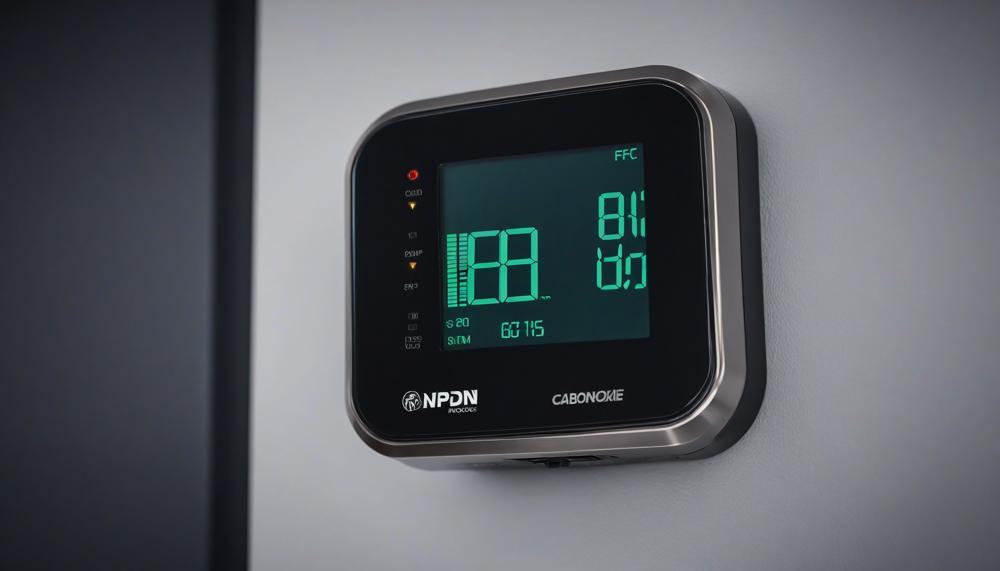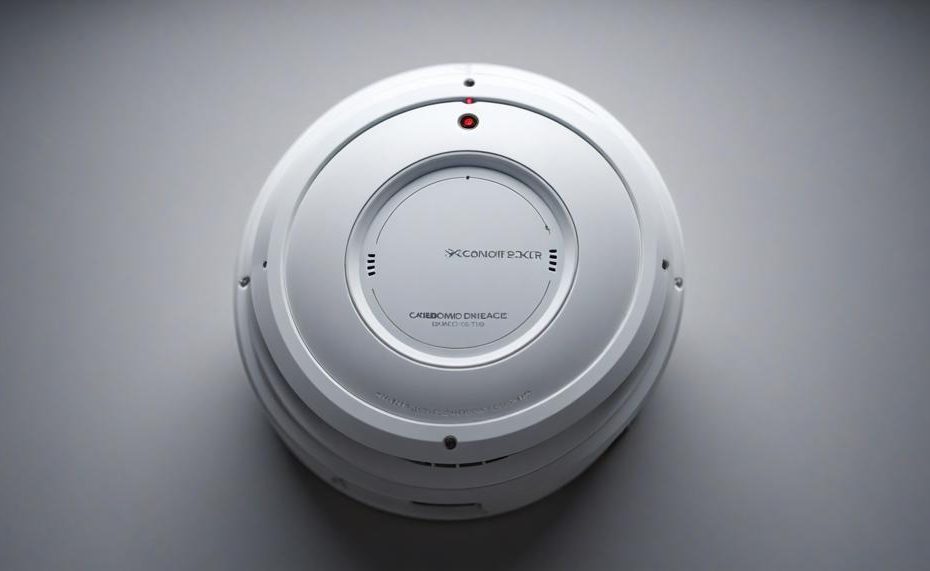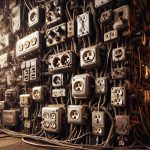Contents
Check for Carbon Monoxide Leaks
To check for carbon monoxide (CO) leaks and prevent your detector from going off in the middle of the night, follow these steps:
Steps to Check for Carbon Monoxide Leaks
- Inspect Potential Sources: Regularly check appliances like gas stoves, water heaters, and fireplaces. Ensure they’re properly ventilated and maintained.
- Use a CO Detector: Install carbon monoxide detectors on every level of your home, especially near sleeping areas. Opt for models with electrochemical sensors for accurate detection.
- Professional Inspection: Hire a certified technician to inspect your home’s heating systems, chimneys, and vents annually.
- Check Ventilation: Make sure that your home has adequate ventilation. Blocked vents can cause CO buildup.
- Be Aware of Symptoms: Learn to recognize the signs of CO poisoning—headaches, dizziness, nausea, and shortness of breath.
Preventing False Alarms

- Placement of Detectors: Place detectors at least 15 feet away from appliances that produce CO to avoid false alarms.
- Battery Maintenance: Replace the batteries in your detectors twice a year. Many false alarms are caused by low battery power.
- Regular Cleaning: Dust and debris can interfere with a detector’s sensors. Clean your detectors regularly according to the manufacturer’s instructions.
- Smart Integration: Use smart home systems to monitor your detectors. Some systems can activate HVAC systems to increase airflow or unlock doors for quick exits in case of high CO levels.
- Check for Defects: Examine your detectors for any signs of internal defects, such as exposed wires or corrosion, which can cause false alarms.
Useful Tips
- Test Detectors Monthly: Press the test button on your detectors monthly to ensure they’re working properly.
- Keep Manuals Handy: Always keep the detector’s manual for reference on troubleshooting and maintenance.
Too Close to Appliances That Give Off Carbon Monoxide
Household appliances known to emit carbon monoxide (CO) include gas stoves, furnaces, water heaters, fireplaces, portable generators, and grills.
To avoid setting off a carbon monoxide detector in the middle of the night, it’s crucial to place these appliances in well-ventilated areas and follow specific guidelines for each:
| Appliance | Emission Source | Placement and Precautions |
| Gas Stoves | Combustion gases | Use an exhaust fan venting outside; never use for heating. |
| Furnaces | Combustion gases | Install in a well-ventilated utility room; regular maintenance. |
| Water Heaters | Combustion gases | Dedicated space with good ventilation; check venting system. |
| Fireplaces | Smoke, gases | Ensure clear chimney; open damper; use glass doors. |
| Portable Generators | Exhaust gases | Operate outdoors away from windows and doors. |
| Grills | Combustion gases | Use outdoors only, never indoors or in a garage. |
Moisture
Moisture can significantly impact the functionality of a carbon monoxide detector, causing false alarms, especially in the middle of the night. High humidity or direct exposure to water can interfere with the sensor’s accuracy, leading to false readings. Additionally, moisture can corrode internal components, compromising the device’s performance.
Effects of Moisture on Carbon Monoxide Detectors
| Issue | Description | Impact |
| High Humidity | Excessive moisture in the air | Interferes with sensor accuracy, causing false alarms |
| Direct Water Exposure | Exposure to water or steam | Can cause immediate malfunction and false readings |
| Corrosion | Moisture-induced corrosion of internal components | Leads to permanent damage and reduced functionality |
Steps to Prevent Moisture-Related Issues
- Proper Placement:
- Install the detector at least 10 feet away from sources of moisture such as bathrooms and kitchens.
- Mount the detector on walls or ceilings to avoid accidental splashes.
- Regular Maintenance:
- Check and replace batteries annually to prevent corrosion.
- Clean the detector regularly to remove dust and moisture buildup.
- Upgrade to Newer Models:
- Invest in modern detectors with better moisture-sealing capabilities.
- Look for models with advanced sensors that distinguish between moisture and carbon monoxide.
- Environmental Controls:
- Use dehumidifiers in high-humidity areas to reduce overall moisture levels.
- Ensure proper ventilation in bathrooms and kitchens to minimize steam exposure.
By taking these precautions, you can ensure that your carbon monoxide detector functions correctly, providing accurate readings and protecting your home from the dangers of carbon monoxide poisoning.
Internal Defect
Carbon monoxide (CO) detectors can sometimes alarm unexpectedly due to various internal defects. Understanding these common issues can help in troubleshooting and ensuring safety.
| Defect | Description | Impact |
| Malfunctioning Sensor | The sensor, which detects carbon monoxide levels, might fail or become less sensitive over time. | This can result in false alarms or, more dangerously, fail to detect CO presence accurately. |
| Faulty Wiring | Wiring issues, such as loose connections or damaged wires, can interrupt the power supply or signal integrity. | Can cause the detector to alarm falsely or not work at all. |
| Low Battery | Even if plugged into mains power, CO detectors often have a backup battery that needs regular replacement. | Low battery levels can trigger a warning alarm, often at inconvenient times like the middle of the night. |
| Blocked Ventilation System | Ventilation around the detector might get obstructed by dust or debris. | This can affect sensor readings, causing either missed alarms or false positives. |
| Improper Installation | Incorrect placement or faulty initial setup can hinder proper functioning. | Improper installation might lead to poor sensor performance and increased false alarms. |
Featured On
Carbon monoxide detectors can go off in the middle of the night for several reasons, often causing alarm and confusion. Here are some common causes and prevention tips:
Common Reasons for Night-Time Alarms:
- Malfunctioning Equipment:
- Sensors can degrade over time or become faulty, causing false alarms.
- Prevention: Regularly test and replace detectors according to the manufacturer’s instructions.
- High Levels of CO from Nearby Sources:
- Appliances like furnaces, water heaters, or stoves can emit CO if malfunctioning or improperly ventilated.
- Prevention: Ensure all fuel-burning appliances are inspected and maintained regularly. Install detectors near these appliances.
- Battery Issues:
- Low battery can trigger a warning beep that might be mistaken for a CO alarm.
- Prevention: Replace batteries twice a year and use high-quality batteries. Many detectors also have a low-battery indicator to alert you before the alarm sounds.
- Environmental Factors:
- Humidity, steam, or smoke from cooking can sometimes cause detectors to react.
- Prevention: Place detectors away from kitchens and bathrooms to avoid false alarms from humidity or smoke.
- End of Detector Life:
- Detectors have a limited lifespan, usually around 5-7 years.
- Prevention: Replace detectors before they expire. Check the manufacturing date and set reminders for replacements.
Prevention Tips:
| Issue | Cause | Prevention |
| Malfunctioning Equipment | Faulty sensors, wiring | Regular testing, timely replacement |
| High CO Levels | Malfunctioning appliances | Proper maintenance, ventilation |
| Battery Issues | Low or dying batteries | Regular battery replacement |
| Environmental Factors | Humidity, steam, smoke | Strategic placement of detectors |
| End of Detector Life | Old detectors | Replace every 5-7 years |
By understanding these factors and implementing preventive measures, homeowners can ensure their carbon monoxide detectors function properly and keep their families safe.
To safely and effectively navigate through a home when a carbon monoxide detector goes off in the middle of the night, follow these steps:
| Step | Action | Details |
| Stay Calm and Alert | Wake everyone up | Ensure everyone is aware of the alarm and knows to evacuate immediately. |
| Avoid Lights and Electronics | Prevent ignition | Turning on lights or using electronics can cause sparks, increasing the risk of fire. |
| Check for Symptoms | Assess health | Look for signs of CO poisoning, such as dizziness or nausea, and get medical help if needed. |
| Leave Immediately | Exit quickly | Use the nearest and safest exit. Do not search for the source of the leak. |
| Move to Fresh Air | Stay safe | Once outside, call emergency services and stay out until it’s safe to return. |
Disclosure
The dangers of not having a working carbon monoxide detector, especially in the middle of the night, are severe and potentially fatal. Carbon monoxide (CO) is a colourless, odourless gas that can seep into homes from malfunctioning appliances, such as heaters, stoves, or generators.
When CO levels rise at night, the lack of alertness can make it nearly impossible to detect the gas, leading to dire consequences.
Here are the key risks:
| Risk | Details | Potential Consequences |
| Unnoticed Symptoms | CO poisoning symptoms, like headache, dizziness, and nausea, can mimic flu symptoms and are often mistaken for other illnesses. At night, these symptoms might go unnoticed as they can occur during sleep. | Without waking up, individuals may succumb to poisoning, leading to severe health complications or death. |
| Neurological Damage | High levels of CO can lead to serious neurological effects such as confusion, memory loss, and impaired motor function. Prolonged exposure during sleep exacerbates these effects. | Permanent brain damage or long-term cognitive impairments can result from prolonged CO exposure. |
| Fatalities | In severe cases, prolonged exposure to high levels of carbon monoxide can be lethal. The gas inhibits oxygen delivery to vital organs. | Death is a real risk if CO exposure is not detected and addressed promptly. |
Conclusion
Waking up to the alarming sound of a carbon monoxide detector in the middle of the night can be a frightening experience, but it is an essential alert to a potentially deadly threat. Carbon monoxide (CO) is a colorless, odorless gas that can silently infiltrate your home, often from malfunctioning appliances like heaters, stoves, or water heaters. Responding promptly and effectively is crucial to ensure the safety of everyone in your household.
Key Takeaways:
- Investigate Immediately: Never ignore the alarm. Treat every alert as a real danger and act swiftly.
- Evacuate and Ventilate: Quickly and calmly evacuate everyone from the house. Open windows and doors to ventilate the space.
- Call Emergency Services: Once outside, contact emergency services for assistance. Do not re-enter the home until it’s declared safe.
- Regular Maintenance: Prevent future incidents by maintaining appliances, ensuring proper ventilation, and having annual professional inspections.
- Detector Upkeep: Replace batteries regularly and test your detectors monthly to ensure they are in working order.
Your carbon monoxide detector is a guardian of your home, standing watch while you sleep.





